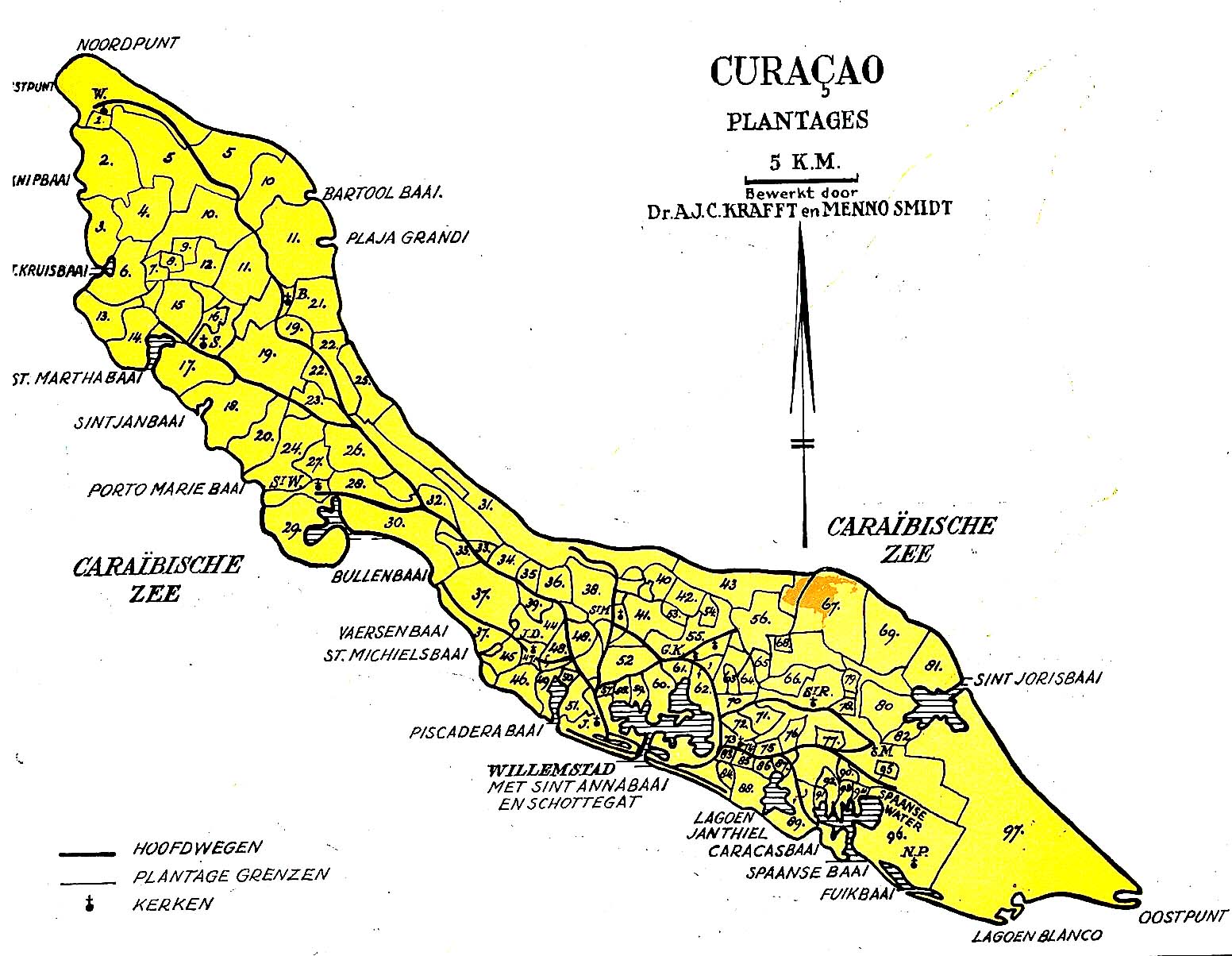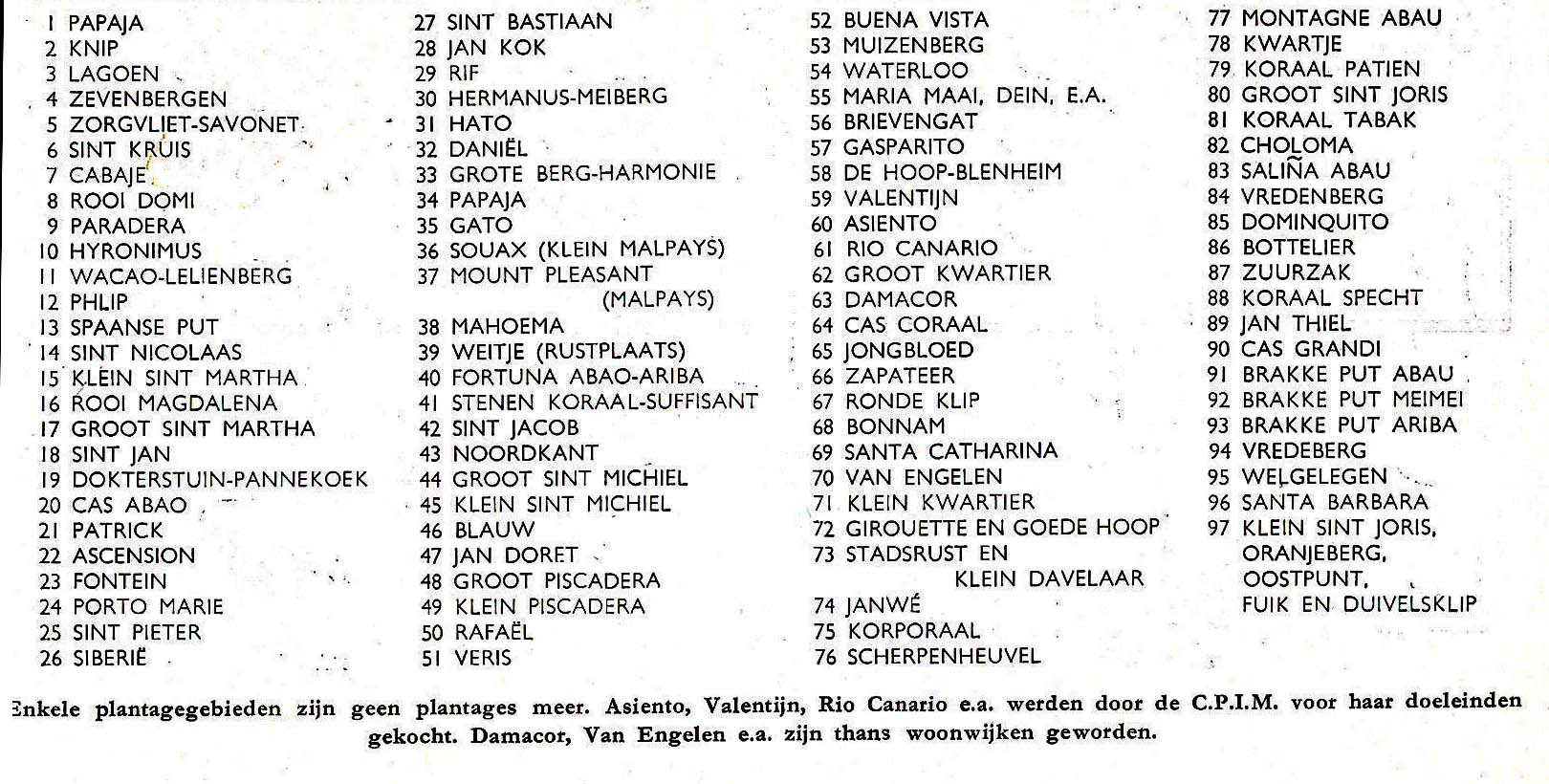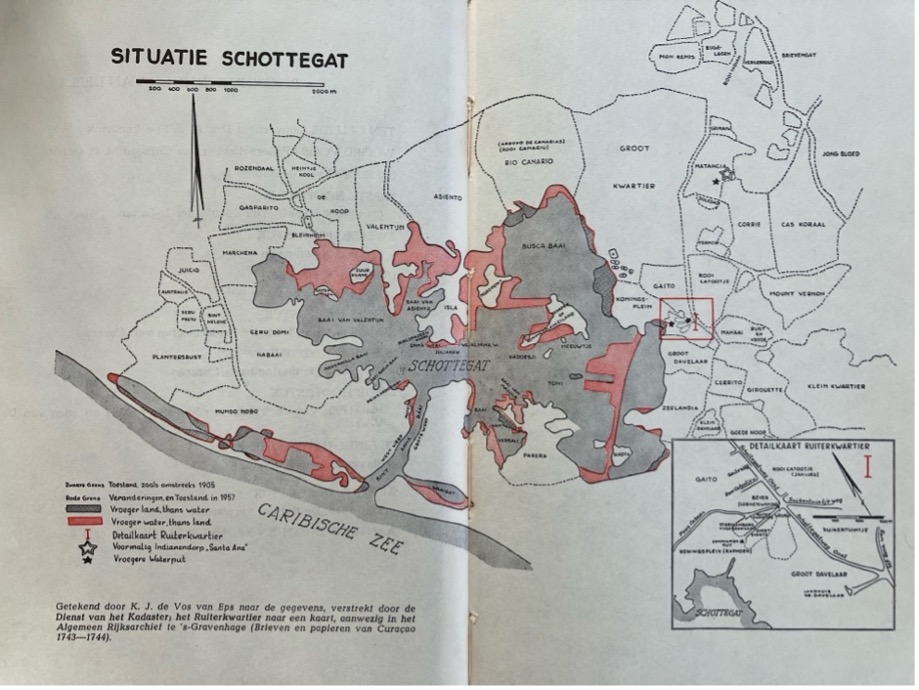The Establishment of the Plantations
(Published in the newspaper Amigoe on the 12th of March 2025)
In the last part, we learned that the West India Company (WIC) took over Curaçao from the Spanish in 1634. The WIC needed a place to keep their ships safe and a good source of salt and paintwood. Before the WIC arrived, the Indians and Spanish already had farms. In this part, we’ll explore how the plantation system was set up after the WIC took over Curaçao.
The first plantations
The WIC wasn’t set up to create plantations, but the soldiers, civilians, and later the enslaved all needed food. After taking over Curaçao, the first company plantations were quickly established. The original idea was to grow food for the city. Once the company plantations were set up, land was quickly given to relatives and friends of the administrators. Soon, most of Curaçao was made up of plantations.
Number of plantations
There were around 100 plantations, but it’s hard to say for sure because they were sometimes merged together. And the line between a plantation and a garden (hofi) was also fuzzy. By 1850, half of the plantations were east of the Schottegat, a third were right around it, and a sixth were at Banda Bou. Check out the attached plantation map with a list of plantation names that are still around today!

Map of Plantations on Curacao
 The plantations around the Schottegat
The plantations around the Schottegat
When we think of the Schottegat, we usually think of the refinery today. But the area around the Schottegat is actually a watery area where there used to be many plantations. And it’s not surprising that it’s a watery area. The Schottegat is a big bay, and bays are formed by dry stream beds called “rooien” in Curacao. Rainwater streams through the rooien into the bays and then to the sea. The Schottegat was a place where many rooien came together. We can see more details about the plantations around the Schottegat on the attached map.

The plantations around the Schottegat (From Curaçao Part I, Dr. Johan Hartog)
The Curaçao plantation
On the Curaçao plantation, things were different from what you’d see on other Caribbean plantations. Unlike those places, where they grew just one thing like sugar cane or coffee, the Curaçao plantation was a real melting pot. They grew all sorts of stuff, and many of it was for people to use or sell in the city. Only a tiny bit of it was shipped off to other countries. The main reason for this was that they didn’t have enough water. Back then, on other islands where they had monocultures, they completely wiped out all the natural areas. But on the Curaçao plantation, they made sure to leave some of the nature reserves intact. People needed certain things like wood for charcoal and divi divi pods for tanning. So they had to keep some of the nature around. This meant that the Curaçao plantation was mostly self-sufficient. It was also a way for the owner to show off his wealth. He often lived in the city where he had businesses.
Plantation products
On a typical plantation, sorghum was a very important crop. Its local name is Maishi Chikí. Growing sorghum was all about the rain. If it didn’t rain, the harvest was failed. Sorghum was turned into funchi, which was the main food for most people.
Livestock farming was a big deal on plantations. On Savonet, for instance, there were around three hundred cows roaming around at the end of the 19th century, and that many more goats and sheep. And let’s not forget the poultry! The cattle would graze in the meadow areas near the plantation.
Plantations also had a courtyard for growing plants. Horticulture is a lot of work and doesn’t use much soil. The main thing they did was grow fruits and veggies. They got the water from wells. As far as vegetable crops are concerned, one can think of long beans (Vigna unguiculata subsp. Sesquipedalis) on Curacao called "Kouseband", haricots, chard (Beta vulgaris subsp. vulgaris var. vulgaris) which is locally called warmoes, watermelon, pumpkins, cucumbers and okra (Abelmoschus esculentus).
As far as fruit growing is concerned, palms such as coconut palms and date palms were found in a courtyard. Furthermore, fruit trees such as kenepa (Melicocca Bijuga), tamarind, mispel (Achras Zapota), mango, figs, mulberries (moerbei).. Citrus was also important, which was evident from the cultivation of lamunchi (Citrus aurantiifolia) and laraha's (Citrus aurantium subsp. Currassuviencis). Of the larahas, only the skin was used for the production of the Curaçao liqueur.
Besides farming, the nearby nature reserves were also used for gathering natural resources. Sadly, logging has led to the loss of a lot of the forest. Wood was cut down to export valuable woods like Brazil wood and pockwood (Pokhout). There was also a huge demand for firewood to make charcoal.
The plantations on Curaçao were originally created to meet the food needs of the local population. But the export of plantation products was pretty low. Curaçao has a dry climate, and the plantations needed a lot of water for people, animals, veggies, and fruits. So, in the next part, we’ll dive into the water management on the plantations.
2. The Establishment of the Plantations